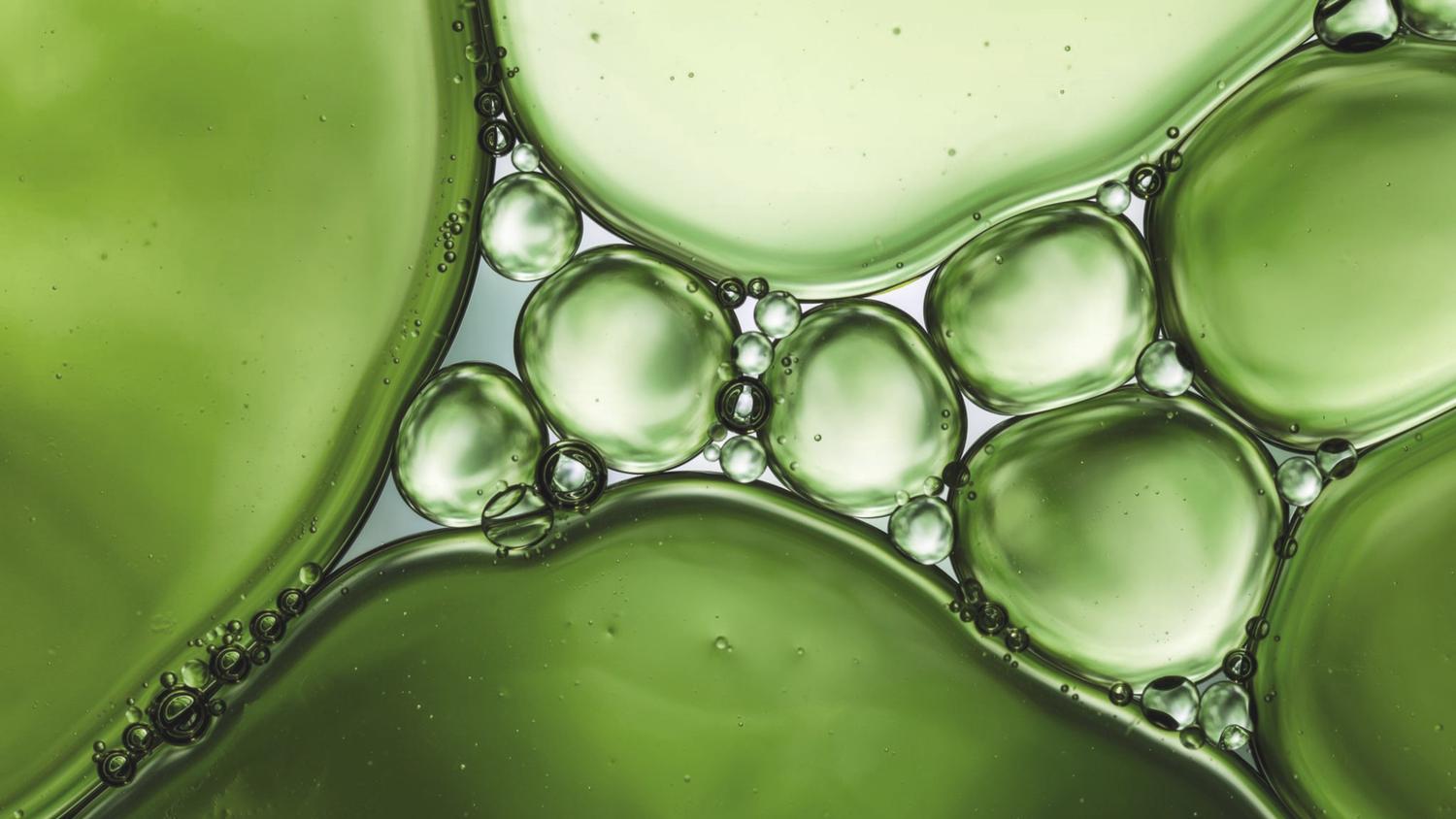
Renewable solutions
6 minute read
From wastewater ponds to drains – renewable solutions can come from new and unexpected sources
The growing demand for more sustainable alternatives to fossil fuels and other fossil products is driving a surge in interest in renewable raw materials. Renewable raw materials, such as those derived from various waste and residue streams, offer a path towards a circular economy and lower-emission products. But how can we unlock the potential of underutilized renewable raw materials? In this article two industry experts, Markus Hovi from Neste, and Dr Patrick Ober from ISCC, share their insights and explore the available solutions and the technical, logistical and legislative hurdles that must be addressed to enable their wider adoption. In addition, the article provides a case study on two interesting waste-based renewable raw materials: palm oil mill effluent (POME) and wastewater-derived grease, also known as “brown grease”.
Renewable raw materials, such as different waste and residues from renewable origins, are ideal for use in countless applications, from renewable diesel and sustainable aviation fuel to renewable feedstock for polymers and chemicals.
“Developing the supply of waste and residues has many potential benefits. From the sustainability perspective, wastes and residues in particular are some of the best raw materials for the production of renewable products. Efficient utilization of wastes and residues is a cornerstone of a circular economy, and producing high-quality products from those materials is one example of that efficiency. Using waste as a raw material may reduce the need to clear new areas of land for cultivation or the production of virgin raw materials. It also leads to lower life cycle emission compared to products made from many alternative materials, including conventional virgin vegetable oils,” tells Markus Hovi, New Feedstocks Lead at Neste.
As awareness and action around climate change continue to grow, so does the demand for renewable raw materials, but their supply is limited. As a result, different markets and customers must contend with fluctuating availability and pricing in order to meet their sustainability goals and requirements, while meeting increasingly stringent regulatory requirements. Many underdeveloped raw material pools exist but face challenges both inside and outside their supply chains.
“Waste and residue raw materials hold significant potential for advancing the transition to a low-carbon bio-circular economy. A key barrier is the underdeveloped processes for transforming waste and residues into valuable products or intermediates. Equally important is the lack of robust infrastructure to support and scale up efficient waste and residue supply chains. These bottlenecks hinder the broader adoption of these materials in industries aiming to decarbonize, ” says Dr Partick Ober, Sustainability Manager at ISCC, one of the world’s largest sustainability certifications systems, covering different raw materials, including agricultural and forestry biomass, biogenic wastes and residues, circular materials and renewables.
Unlocking the underutilized
Neste has produced renewable fuels from renewable raw materials, such as waste and residues, for almost two decades. Turning waste into useful products is technically challenging – largely because of their impurities, but also due to the high volumes of water they typically contain. Advanced pretreatment processes and the use of the proprietary NEXBTL technology, combined with a global sourcing network, has enabled Neste to introduce several challenging raw materials into the raw material pool. With the NEXBTL technology, Neste has been able to tackle one of the major challenges; processing of lower-quality waste and residues.
“In addition to expanding the sourcing volumes of the raw materials already used in the production of our renewable products, we are developing the supply of a wide range of so-called advanced raw materials including challenging, lower-quality waste and residues that are still underutilized because they are difficult to process or due to other challenges, such as collection,” tells Hovi.
Two of the interesting renewable raw materials are palm oil mill effluent (POME) and wastewater-derived grease, also known as “brown grease”.
POME (palm oil mill effluent) is liquid oily waste that is generated in palm oil milling. The milling creates large volumes of wastewater that are funneled into ponds outside of the mills. Any residual oil in the liquid subsequently rises to the top and can be skimmed out of the ponds.
Brown grease is fats, oils and grease captured by grease traps installed e.g. under sinks. These “traps” are receptacles that can be found in restaurants, cafeterias, hotels, and food processing facilities, where they are installed to intercept the fats, oils and solid waste while allowing clear water to escape.
The removal of these substances is both beneficial and necessary. The non-water soluble materials found in POME – including oil – are removed using various technologies in order to minimize the risk of contaminating nearby water sources, and their removal also significantly reduces methane emissions from the waste water pond. Similarly, brown grease must be cleaned or pumped out of grease traps on a regular basis in order to prevent sewer blockages and other problems associated with ineffective drainage.
“Along with all of the advantages, however, ensuring both the sustainability and availability of POME and brown grease requires a big-picture view and extensive collaboration,” notes Hovi.
The keys: collaboration and credible certification schemes
Many of the bottlenecks associated with renewable raw materials can be described as logistical or legislative.
“In terms of logistics, the supply chains often need to be built from the ground up. If we take POME as an example, palm oil mills are located almost exclusively in areas that are far away from treatment and refinement facilities, meaning that establishing reliable storage and transportation are critical pieces of the POME value chain. Strict regulation and verification processes, such as annual on-site audits for ISCC-certified palm oil mills supplying waste and residues, are crucial. These measures can prevent fraud and ensure sustainable sourcing of raw materials. Several regulations and sustainability requirements already exist, and our focus must now be on full compliance," Hovi emphasizes.
“To overcome these challenges, a dual approach is required: stimulating demand and providing credible evidence of environmental benefits. Policymakers play a crucial role in this effort. For example, the European Commission has set ambitious targets and introduced incentives for using waste and residues in sectors such as fuel production. These measures are essential for fostering innovation and investment in sustainable raw material processing,” adds Dr Ober.
The success of these initiatives relies heavily on transparency and trust. Certification schemes, like ISCC (International Sustainability and Carbon Certification) play a pivotal role in offering verifiable proof of sustainability, ensuring that waste and residue usage results in real environmental benefits.
“Our certification demonstrates the traceability and sustainability of raw materials from their origin to the final products. In addition to this, we support our auditors through specialized training on waste and residues supply chains. Our involvement also extends beyond establishing a certification system. By adopting a multi-stakeholder approach, we unite industry, academia, auditors, and authorities to encourage collaboration, spark innovation, and refine our framework for credible certification," explains Dr Ober.
“It is crucial to improve the transparency of the supply chain and work with certification schemes like ISCC to ensure the sustainable and traceable use of renewable raw materials such as POME and brown grease. Rather than excluding these raw materials due to existing concerns, a collaborative approach to enhance transparency and verification is essential. This would ensure that these valuable resources are not unnecessarily excluded from approved lists of raw materials for biofuels and other renewable products," concludes Hovi.

Raw materials
Neste uses a wide variety of sustainably produced raw materials each year to produce renewable products
Read more



